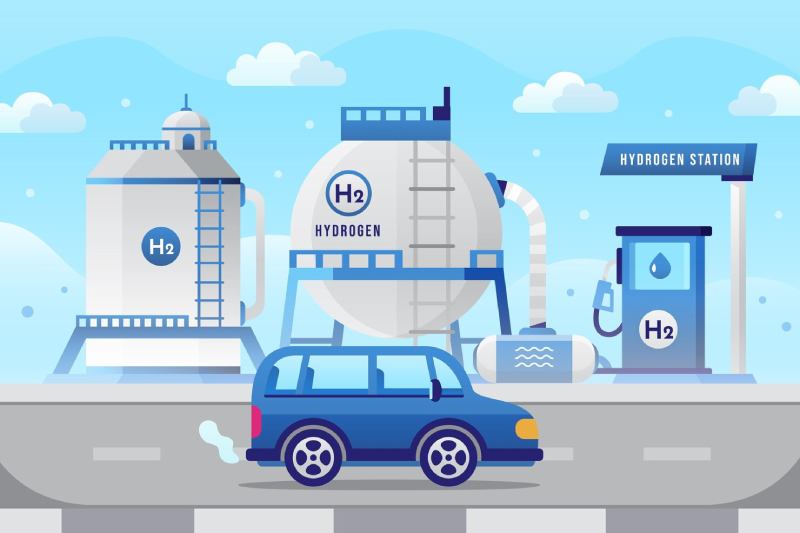Mozambique, located in southeastern Africa, has experienced significant economic growth over the past decade, largely driven by its rich natural resources. In 2023, the country’s Gross Domestic Product (GDP) was approximately over USD20 billion.[ 1 ] The economy is primarily based on agriculture, mining, and energy sectors, with recent developments in natural gas exploration positioning Mozambique as a potential key player in the global energy market.
Mozambique’s energy sector is characterized by a diverse mix of energy sources. The country has the largest natural gas reserves in Sub-Saharan Africa, with over 180 trillion cubic feet (TCF) of natural gas. However, Mozambique’s power sector is strongly driven by renewable energy. It had about 3 GW of installed power generation capacity as of 2023, dominated mostly by renewables (about 78 per cent)[1] .
Renewables in Mozambique is almost wholly dominated by hydropower with negligible contribution by solar PV, biomass, and onshore wind. Mozambique also boasts an impressive hydropower potential of around 12GW, one of the largest in Sub-Saharan Africa, with over 80 per cent of it located in the Zambezi Valley, which includes the existing 2GW Cahora Bassa project[2] .
[1] IRENA stats tool, July 2024
[2] https://furtherafrica.com/2023/03/15/mozambiques-mphanda-nkuwa-to-speed-up-regional-green-transition/
Mozambique is in the early stages of exploring hydrogen as part of its energy transition strategy. The country’s abundant renewable energy resources, particularly hydropower, solar, and geothermal resources, provide a strong foundation for developing a green hydrogen economy. The country’s experience in natural gas production and export can also be harnessed for green hydrogen ecosystem development. While there is no significant hydrogen production yet, Mozambique is positioning itself to become a key player in hydrogen production and export in the future.
Projects such as the Cahora Bassa Dam and emerging solar farms could provide the renewable electricity needed for hydrogen production
Mozambique does not presently have a dedicated national hydrogen policy or strategy. However, its broader energy policies and regulatory frameworks, combined with its commitment to renewable energy development, lay the groundwork for the development of a hydrogen economy. The Government of Mozambique has expressed its ambition to harness the vast renewable resources of the country to propel it as one of the leading green hydrogen producers globally[1] . However, the production targets are not clear as of now.
Mozambique does not have regulations specifically addressing hydrogen production, storage, or transportation.

Mozambique has great potential to develop a hydrogen industry due to its abundant resources. The country has abundant hydroelectric, natural gas, solar and wind energy resources, which can support the production of all types of hydrogen, especially green hydrogen.
Mozambique has significant solar potential, with average Global Horizontal Irradiance (GHI) of around 4.775.87 kWh/m2. By the end of 2022, 125 MW of solar power plants were developed, with 60 MW connected to the national grid (Mocuba and Metoro projects).[ 5 ]
Mozambique also has one of Africa's highest hydropower potentials, at over 12GW. The Cahora Bassa plant, with a capacity of 2.08 GW, contributes to over 72 per cent of the country's total electricity generation capacity and is a key electricity exporter. [ 6 ] The Mphanda Nkuwa hydro project (1,500 MW) on the Zambezi River is under construction and is expected to meet domestic demand and enhance power export opportunities, positioning Mozambique as a regional energy hub. Additionally, there are 12 major river basins with potential for various hydropower projects.[ 7 ]
There is no announcement of any manufacturing project so far for electrolysers, fuel cells or other components related to green hydrogen value chain in Mozambique.
Jearrard Energy Resources (JER) and its subsidiary, Connect Plus Energy LDA, are developing a 12 GW solar-to-hydrogen facility in Inhambane Province, Mozambique. The facility will produce over 4,000 tonnes of hydrogen daily. The project includes a 125 km pipeline and a new port at Morrumbene for hydrogen export.[10 ]